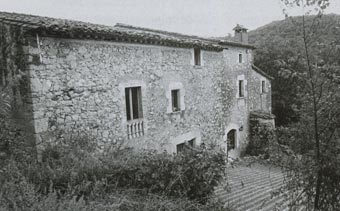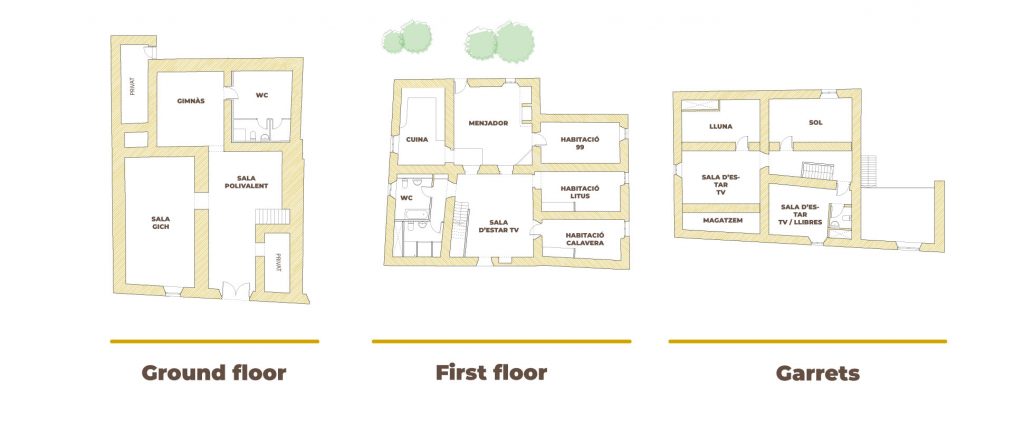The house
THE HOUSE
Spaces designed to make you feel at home
CAN GICH
Discover everything about Can Gich
HISTORY
Can Gich is located at the edge of the Palagret valley in between Juià and Celrà. It sits next to the Espolla and Pou farmhouses, past a small creek and close to the Palagret river, in a unique spot within the Gavarres Natural Park. We do not know exactly when this house was built but we do know a little bit about its history. It was formerly known as Mas Banyes, the first owner’s family name. The first written reference to the Banyes de Palagret surname appears in Girona’s Pia Almoina in 1372. The house was inherited consecutively by several Banyes family members until half way through the 20th century. Now a days the house has the Gich surname which comes from a family from Sant Martí Vell that came into Mas Banyes in mid 19th century as shepherds and eventually became owners in 1932. An interesting fact is that the house still preserves an old lime kiln and the artwork painted on the tiled water collector on the roof. This unique artwork’s story is unknown to date.

6 rooms
There are 4 double and 2 quadruple rooms, fully equipped
3 bathrooms
We have 3 fully equipped bathrooms
family atmosphere
We are committed to quality tourism, respectful of nature and the environment
Green spaces
Green spaces to relax and sunbathe in full connection with nature
Meeting room
There is a room where you can hold meetings, yoga sessions and much more
Swimming pool
Enjoy a private pool to cool off on the hottest days
LOCATION
Can Gich is located within the Gavarres Natural Park, which has been a protected area since 1992. It takes up about 28.672 hectares of land in the northern region of the Coastline mountain range and it is known for its scientific, ecological, picturesque and cultural values. The massif is the physical barrier between Baix Empordà and La Selva. The highest summit is Puig de la Gavarra at 532m, followed by Puig d’Arques at 527m.

Vegetation
The Gavarres Natural Park is known for having the largest cork oak and cluster pine forests in the Catalan region. You can also find alder, hazelnut and walnut trees in the area, which are some of the typical eurosiberian tree types.. In the more humid regions you can also find a lesser known group of plants, the quilworts. These plants have a very atypical way of reproduction, they grow spores at the base as reproductive means, very atypical in the plant kingdom. Orchids are also very common in this massif, in particular the Early Purple Orchid which is on the list of endangered plants at a European level. It grows on well-kept riversides and has two distinctive bulbs on its roots.

Wildlife
The Gavarres is a renowned place for bird watching, where one can see over 100 different species including eagle owls and sparrowhawks. It is also important to point out that the Gavarres is home to 14 different species of endangered bats. One can also find up to 11 species of amphibians and 4 kinds of local fish in the wet areas of the Park.
CONTACT
If you have any questions, don’t hesitate in writing us



